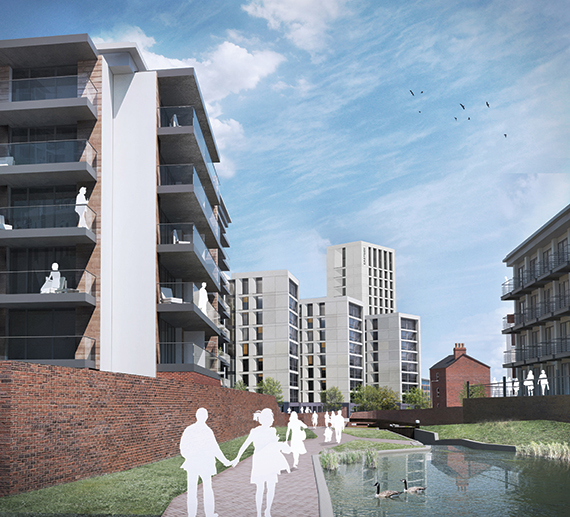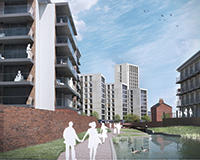| Institution | Total students | Postgraduates (%) |
|---|---|---|
| Aston University | 10,985 | 26.0 |
| Birmingham City University | 22,540 | 16.7 |
| University of Birmingham | 32,335 | 40.7 |
| University College Birmingham | 4,995 | 9.7 |
| Newman University (Birmingham) | 2,895 | 20.9 |
| University of Coventry | 25,635 | 20.8 |
| University of Warwick | 25,245 | 41.7 |
| Staffordshire University (Stafford/Stoke) | 20,145 | 18.1 |
| Keele University (Staffordshire) | 9,980 | 24.3 |
| University of Wolverhampton | 19,100 | 16.4 |
| Total UK | 2.23m | 24.2 |
Above: Student numbers, selected West Midlands universities, academic year 2013-14
The West Midlands is something of a student magnet. The University of Warwick picked up the influential Sunday Times University of the Year gong for 2015, the accolade having gone to the University of Birmingham the previous year, when the University of Coventry was also a runner-up.
A larger proportion of students – who headed to university in the region last month for the start of the academic year – will be living in purpose-built accommodation than ever before. Birmingham – with five universities and well over 70,000 students – has so far attracted the most interest from developers.
“The whole market is more competitive than ever. There’s been big growth in the number of rooms, especially in the city centre,” confirms Sarah Jones, director of Cushman & Wakefield’s education team. More than 19,000 purpose-built rooms were complete at the start of this academic year and over half of the total available in Birmingham is private sector accommodation, significantly more than the 40% national average.
This has led to concerns that the student market in the UK’s second city is reaching saturation level, though most agents see further growth potential. “The planning pipeline is big, but not everything will be built,” points out Jones. Specialist student accommodation developers such as Crosslane, which finished its £28m, 259-room Athena Studios in Selly Oak this summer, and Alumno, which is due to complete its £30m, 659-bed complex at City Locks, Eastside, for the start of the 2016 academic year, are still actively seeking other opportunities in the city. “In any case we don’t just disappear when we hand over the keys, we’re in it for the long term,” says Crosslane marketing director Charlie Pogson.
The key to future developments in Birmingham will be matching room types with demand. “The studio
market is probably saturated,” admits C&W’s Jones. These are most popular with postgraduates who, says Jones, “don’t want to be lumped in with undergraduates, they want peace and quiet and don’t want the hassle of dealing with a private landlord for a year”.
Around 9% of the purpose-built student stock available this year was in studios, reflecting the fact that the University of Birmingham has a much higher volume of postgrads – more than 40%, compared to a UK average of around 24%.
The University of Warwick is the other institution in the region with a high number of postgrads (see table, above).
Development of new accommodation on its out of town campus is limited, so it is looking at nearby centres including Coventry and Leamington Spa, where Alumno rolled out proposals this summer for a 200-bed scheme on Althorpe Street.
Coventry has around 11,000 purpose-built rooms, but is widely believed to have potential for many more, though rooms actually under construction number only 300. “It’s time to get the spades out,” declares James Pullan, head of student property at Knight Frank. That’s exactly what Barberry Developments hopes to do with a £65m, 850-bed scheme on the former Royal Mail site at Bishop Gate which it presold to the University of Coventry this summer. Assuming planning consent is granted, students could move in for the start of the 2018 academic year.
Wherever new student accommodation is built, it is likely to have advanced from the type of property built in recent years. Alumno managing director David Campbell says: “I predict an increasing emphasis on offering choice and flexibility, such as twin room/sharing in order to halve rents. Multi-functional buildings will increasingly become the norm, with developers looking to blend residential and academic teaching areas within the same building to create an ongoing interface with campus life.”
Designing for success
Some first-generation bespoke student properties now look stark in comparison with the boutique hotel-style finishes applied to the majority of current completions. However, Dav Bansal, director at Birmingham practice Glenn Howells Architects, believes that what happens on the outside is just as important.
He explains: “Much of the student housing built over the past decade has struggled largely due to its lack of placemaking and social cohesion within the context, thereby not helping to foster a social experience for student life. We believe the range of communal and social facilities, proximity to local amenities, all within a safe and secure environment, contribute to the success of a scheme.”
Bansal says the next generation of student housing is regarded as integral to the wider community and in some cases, has offered innovative opportunities to benefit the local economy including incubator workspaces for graduate businesses, a crèche facility or a community theatre. Well-designed purpose-built space is, he says, “allowing students to move away from poorly managed houses by absentee landlords and, in some areas of the West Midlands, helping to release homes back to families”.

Attracting investment
It’s not just developers who can see the potential of new student property in the West Midlands. “Both Birmingham and Coventry have had their fair share of scrutiny from investors and on a much smaller scale we are seeing some activity in Stoke, Stafford and Worcester,” reports James Hanmer, a director in Savills’ student investment and development team.
He says institutional funds are now comfortable investing in the region, and points to the purchase of Alumno’s Birmingham Eastside City Locks scheme (pictured above) by LaSalle Investment Management for £43.6m, a yield of 5.4%. Hanmer adds: “The Midlands as a whole has a good critical mass of cities giving investors the highest chance possible of picking up student demand.”
Knight Frank’s head of student property, James Pullan, agrees and believes there will be opportunities in parts of the region not previously seen as attractive. He highlights the University of Wolverhampton’s announcement earlier this year that it intends to pull in £250m of investment by 2020. He forecasts: “This kind of thing will change perceptions of the West Midlands as an investment location.”











